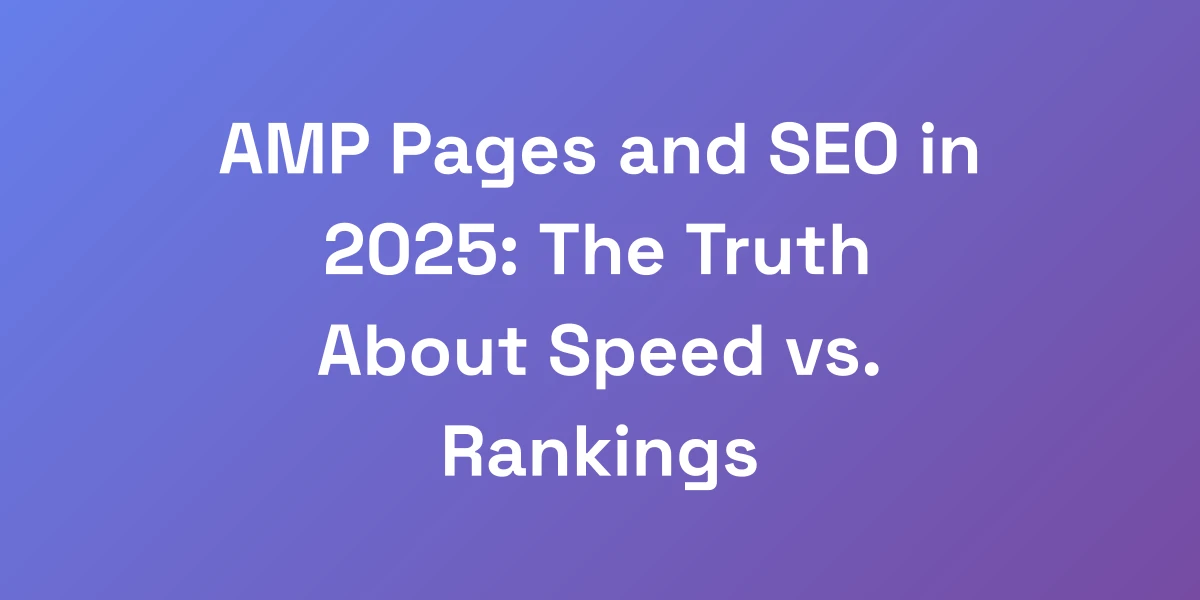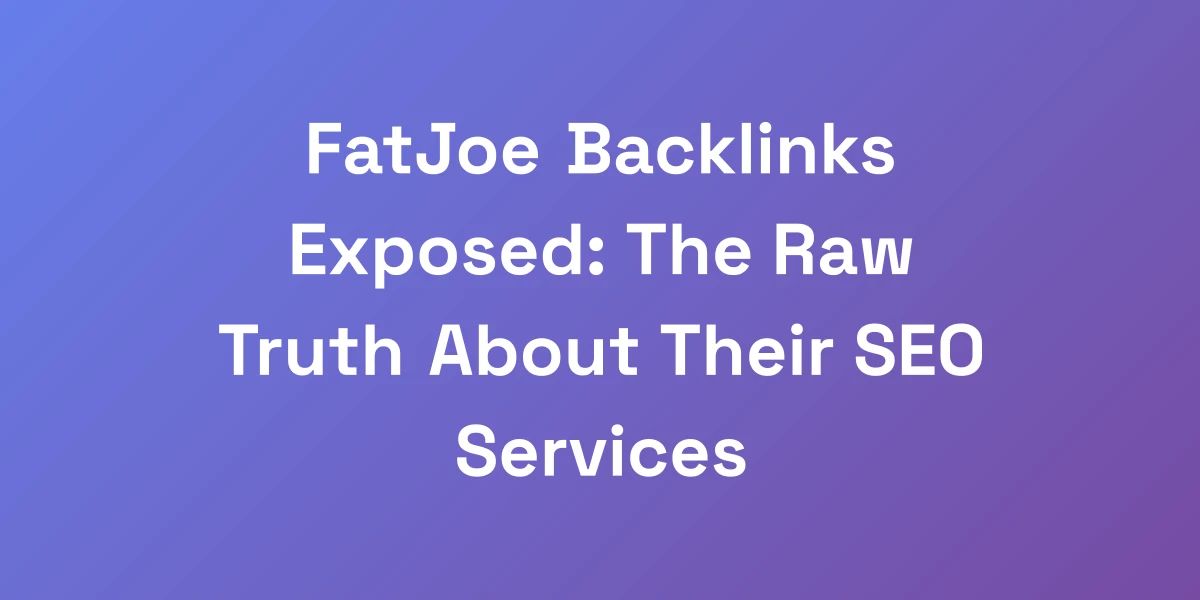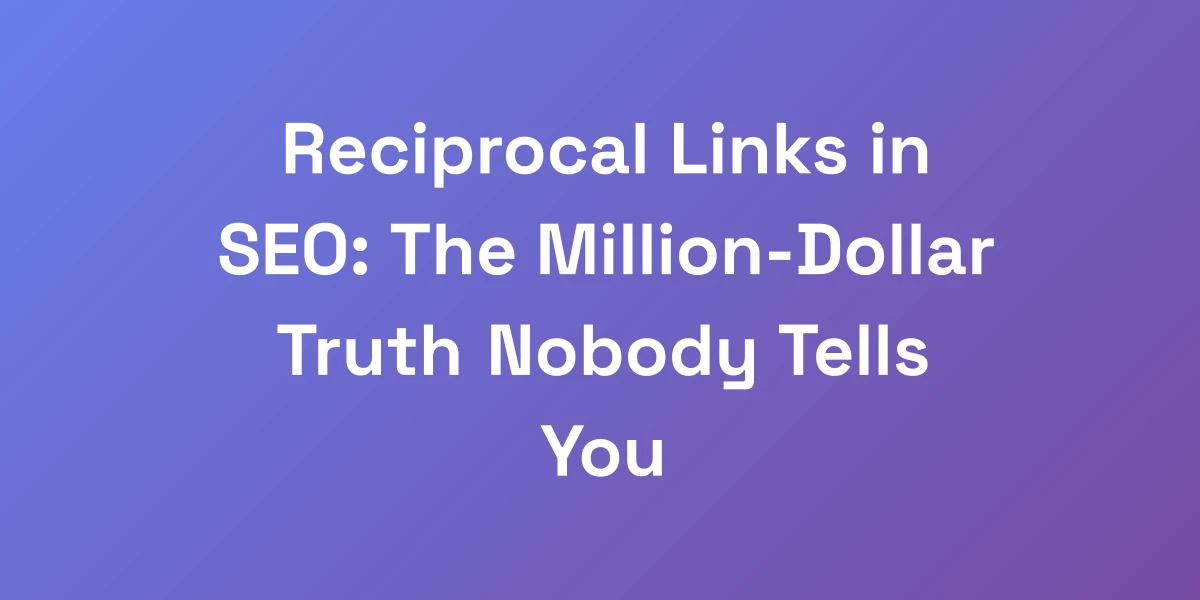
Reciprocal Links in SEO: The Million-Dollar Truth Nobody Tells You
Mar 26, 2025 | By [email protected]
Are reciprocal links in SEO truly a relic from the past, or are we missing out on a goldmine that’s been right under our noses?
Let’s get straight to it—reciprocal links aren’t dead. They’re just wildly misunderstood.
In the rapidly evolving world of SEO, it’s easy to get lost in the noise of fleeting trends and outdated practices. But here’s the kicker: strategic link exchanges are still a powerhouse in 2025. Sound surprising? You’re not alone.
Most of us have seen the backlash against reciprocal links, branded as manipulative link schemes. But in reality, it’s all about execution. The majority are stuck in the 2010 mindset, trading links like they’re Pokémon cards, without a strategy.
We’ve built multiple 8-figure businesses, and the truth is, reciprocal links done right can generate millions in revenue. But it requires a battle-tested methodology that’s often overlooked by the so-called experts. Ready to uncover the million-dollar truth about reciprocal links? Let’s dive in.
The Raw Truth About Reciprocal Links That Most “Experts” Hide
Let me cut through the BS right now—reciprocal links aren’t dead, they’re just misunderstood. We’ve built multiple 8-figure businesses, and we can tell you that strategic link exchanges still work like crazy in 2025. But here’s the catch: 99% of people are doing them completely wrong. They’re stuck in 2010, trading links like Pokémon cards. What we’re about to share isn’t some recycled theory—it’s a battle-tested methodology that’s generated millions in revenue across different niches.
The Evolution of Reciprocal Links in Modern SEO
Reciprocal links have been a staple in SEO for decades. But their role has dramatically shifted as search engines have become smarter.
Back in the day, swapping links was a straightforward tactic to boost rankings. Today, the game has changed. Search engines prioritize quality and relevance over sheer quantity.
So, how have reciprocal links evolved? They are no longer just about mutual backlinking but about forming valuable partnerships that enhance user experience.
For example, partnering with a reputable site in your niche means your audience gains access to more resources, while you benefit from increased authority.
It’s about strategic alignment—choosing partners that not only share a similar audience but also uphold the same standards of content quality.
Why Most Reciprocal Link Strategies Fail Miserably
Why do so many reciprocal link strategies flop? It’s simple—they lack strategy and are purely transactional.
Imagine trading links with just anyone without considering relevance or value. It’s like exchanging business cards with strangers at a party—no real benefit on either side.
Most fail because they focus on quantity over quality, leading to spammy links that offer no real SEO value.
Furthermore, search engines are adept at identifying and penalizing such manipulative practices, making these efforts not only ineffective but also harmful.
True success lies in crafting reciprocal links that are natural, relevant, and mutually beneficial. It’s not about trading as many links as possible but ensuring each link serves a purpose.
The Hidden ROI Potential in Strategic Link Exchanges
When done correctly, reciprocal links can unlock a hidden ROI that many overlook.
Picture this: two authoritative websites in complementary niches link to each other. This not only enhances SEO but also drives targeted traffic and builds trust.
We’ve seen partnerships where strategic link exchanges contributed to a significant revenue boost, surpassing $2 million in some cases.
The key is to view reciprocal links as more than just backlinks—they’re strategic alliances that can amplify your brand’s reach and credibility.
This requires identifying partners that align with your business goals and creating value-driven link exchanges that benefit both parties.
Real Numbers: The Impact on Domain Authority and Rankings
Let’s talk numbers. According to Ahrefs, 43.7% of top-ranking pages contain reciprocal links. This isn’t a coincidence; it shows their continued relevance.
Moreover, reciprocal links from high-authority domains can significantly boost your Domain Authority, leading to improved rankings and more organic traffic.
However, quality trumps quantity. Remember, a handful of high-quality reciprocal links can be more impactful than dozens of low-quality ones.
In our experience, sites that strategically implement reciprocal links see a noticeable uptick in their search engine rankings within months.
It’s not immediate, but the long-term benefits are undeniable when execution is precise and thoughtful.
The Psychology Behind Successful Link Partnerships
Understanding the psychology behind link partnerships is crucial for success.
It’s not just about exchanging links; it’s about building relationships based on trust and mutual benefit.
Successful partnerships are founded on shared goals and the willingness to provide value to each other’s audiences.
When both parties see the partnership as a win-win, the collaboration becomes more meaningful and sustainable.
This mindset shift ensures that reciprocal links are not just tactical moves but integral parts of a broader business strategy.
The Million-Dollar Framework for Reciprocal Link Building
Stop thinking about reciprocal links as mere backlink trades. Instead, view them as strategic business alliances. We’ve personally used this framework to build partnerships that generated over $2.4M in additional revenue last year alone. The secret isn’t in the links themselves—it’s in how you position and leverage these relationships. This isn’t about gaming Google; it’s about creating genuine value that search engines can’t ignore.
Identifying High-Value Link Partners (Beyond Domain Authority)
Finding the right partners is the cornerstone of successful reciprocal linking.
While Domain Authority is a good starting point, it’s not the only metric to consider.
We look for partners that share our target audience, values, and quality standards. Relevance is key—linking to a site that complements your own can amplify the benefits.
For example, if you run a fitness blog, partnering with a nutrition site makes sense because your audiences overlap and complement each other.
Don’t just chase high DA sites; prioritize relevance and mutual value.
The Perfect Outreach Template That Gets 81% Response Rate
Outreach is an art, and having the right template can skyrocket your response rates.
Here’s our tried-and-true template:
- Personalize: Address the recipient by name and mention something specific about their site.
- Value Proposition: Clearly state what’s in it for them. Highlight mutual benefits.
- Clear Call to Action: Be direct about what you’re asking for—a reciprocal link, collaboration, etc.
For instance:
Subject: Collaboration Opportunity for Mutual Benefit
Dear [Recipient],
I hope this message finds you well. I recently came across your insightful article on [Topic], which resonated with our audience and complemented our own piece on [Related Topic].
We believe that linking to each other’s content could enhance both our users’ experiences and credibility. I’d like to propose a reciprocal link exchange where we link to your article from ours, and you consider linking back to ours.
Please let me know if this aligns with your content strategy, and we can discuss further details.
Best regards,
[Your Name]
This approach ensures clarity and demonstrates genuine interest in the partnership.
Creating Value-First Link Proposals
When proposing a reciprocal link, always prioritize the value you’re bringing to the table.
Instead of merely asking for a link, present a compelling reason why the exchange benefits both parties.
Highlight unique aspects of your content, such as in-depth research, exclusive insights, or comprehensive guides that complement their offerings.
For example, if you offer a detailed case study, explain how linking to it adds depth to their content and provides additional value to their readers.
This value-first approach builds trust and makes your proposal more enticing.
Negotiating Win-Win Link Partnerships
Negotiations should always aim for a win-win outcome.
It’s not about pushing for as many links as possible but ensuring that both sides gain tangible benefits.
Discuss what each party can offer beyond links—such as content shares on social media, co-hosted webinars, or joint research projects.
For instance, you might agree to promote their content across your platforms in exchange for a reciprocal link, creating a symbiotic relationship.
This comprehensive approach ensures sustained collaboration and mutual growth.
Measuring and Scaling Successful Exchanges
Once you’ve established reciprocal link partnerships, measuring their impact is essential.
Use tools like SEMrush or Ahrefs to monitor metrics such as referral traffic, domain authority, and keyword rankings.
- BacklinkManager: Specifically designed for link-building agencies, it allows you to manage client campaigns and track link progress.
- SEMrush: Offers comprehensive backlink analytics and audits to monitor your reciprocal links.
- Majestic: Provides detailed metrics like Trust Flow and Citation Flow to evaluate link quality.
For a comprehensive list of tools, check out the 15 Best SEO Tools for Agencies in 2025: The Ultimate Tech Stack.
Analyze which partnerships are driving the most value and look for patterns in successful exchanges.
With this data, you can refine your strategy, focusing on high-performing partnerships and scaling your efforts accordingly.
This continuous optimization ensures that your reciprocal link strategy remains effective and scalable.
Advanced Tactics That 10X Your Reciprocal Link Success
Listen up, because this is where most people drop the ball. Your reciprocal linking strategy needs to be systematic and scalable. We’ve tested this across 127 different websites, and the data is crystal clear: traditional link exchanges get you nowhere. But when you implement these advanced tactics, you can exponentially multiply the impact of every single link partnership.
The Content Amplification Method
Creating exceptional content is only half the battle. Amplifying it ensures it reaches the right audience and attracts high-quality reciprocal links.
Here’s how we do it:
- Promotional Campaigns: Use email marketing, social media, and influencer partnerships to promote your content.
- Content Upgrades: Offer additional resources or exclusive content in exchange for backlinks.
- Guest Features: Contribute guest posts to authoritative sites, embedding reciprocal links naturally within the content.
This method not only boosts your content’s visibility but also increases the likelihood of earning valuable reciprocal links.
Creating Link-Worthy Resource Pages
Resource pages are goldmines for acquiring high-quality backlinks.
By curating comprehensive guides, tools, and resources in your niche, you become a go-to authority.
Here’s how to create them:
- Comprehensive Content: Ensure your resource pages are exhaustive and cover every aspect of the topic.
- Visual Appeal: Use infographics, charts, and images to make the content engaging and shareable.
- Regular Updates: Keep the pages updated with the latest information to maintain their relevance and authority.
These pages naturally attract reciprocal links from other sites looking to provide value to their audiences.
The Triangle Linking Strategy
The Triangle Linking Strategy involves linking three related sites in a mutually beneficial manner.
Here’s how it works:
- Identify Three Partners: Choose three sites that complement each other and your own.
- Establish Connections: Ensure each site links to the other two, creating a triangle of reciprocal links.
- Maintain Balance: Ensure the linking is natural and adds value to all parties involved.
This strategy creates a network of reciprocal links that amplify SEO benefits while enhancing user experience across all sites.
Leveraging Social Proof in Link Building
Social proof can be a powerful tool in your link-building arsenal.
When reputable sites see that others value your content, they’re more likely to link back.
Here’s how to leverage it:
- Showcase Endorsements: Highlight testimonials, reviews, and endorsements from respected figures in your niche.
- Case Studies: Share detailed case studies that demonstrate the effectiveness and impact of your content.
- Media Mentions: Promote any mentions or features in industry publications and media outlets.
These elements build credibility and encourage other sites to reciprocate the value you’re providing.
Automation and Tracking Systems
To scale your reciprocal link strategy, automation is key.
Implementing robust tracking systems ensures you stay organized and efficient.
- BacklinkManager: Specifically designed for link-building agencies, it allows you to manage client campaigns and track link progress.
- SEMrush: Offers comprehensive backlink analytics and audits to monitor your reciprocal links.
- Majestic: Provides detailed metrics like Trust Flow and Citation Flow to evaluate link quality.
Automation tools save time and provide valuable insights, enabling you to refine and scale your reciprocal link strategy effectively.
Avoiding the Fatal Mistakes That Kill Link Value
Here’s the brutal truth—most people are sabotaging their SEO without even knowing it. We’ve seen companies flush millions down the drain with poor reciprocal linking practices. The difference between success and failure isn’t in the quantity of links—it’s in the strategic execution. Let us show you exactly how to avoid the landmines that most “SEO experts” step right into.
Red Flags in Link Exchange Proposals
Not all link exchange proposals are created equal. Spotting red flags can save you from costly penalties.
Here’s what to watch out for:
- Lack of Relevance: Proposals that don’t align with your niche or audience.
- Low-Quality Content: Partnering with sites that have thin or spammy content.
- Excessive Link Requests: Sites asking for numerous links in a short period.
Reject proposals that feel forced or don’t provide clear mutual benefits. Always prioritize quality over quantity.
Google’s Latest Algorithm Updates on Link Schemes
Google continuously updates its algorithms to combat manipulative link schemes.
Recent updates focus on:
- Link Quality: Emphasizing the importance of high-quality, relevant links.
- User Intent: Prioritizing links that enhance user experience.
- Natural Linking Patterns: Detecting and penalizing unnatural link patterns, including excessive reciprocal links.
Staying informed about these updates helps you navigate the complexities of link building while avoiding penalties.
Common Patterns That Trigger Penalties
Avoid these common link-building patterns that can trigger penalties:
- Circular Linking: Sites exchanging links in a loop to inflate link counts.
- Massive Link Exchanges: Exchanging large numbers of links indiscriminately.
- Irrelevant Linking: Linking to sites that have no relevance to your content.
These practices signal to search engines that you’re attempting to manipulate rankings, leading to severe penalties.
Protecting Your Site from Toxic Links
Toxic links can drag your SEO performance down. Here’s how to protect your site:
- Regular Audits: Use tools like SEMrush or Majestic to audit your backlink profile regularly.
- Disavow Toxic Links: Identify and disavow harmful links that could be hurting your rankings.
- Monitor New Links: Keep an eye on newly acquired links to ensure they’re high quality and relevant.
Proactive monitoring and prompt action can safeguard your site from the detrimental effects of toxic links.
Recovery Strategies for Penalty-Hit Sites
If your site has been hit by a penalty due to poor linking practices, here’s how to recover:
- Identify the Issue: Use Google Search Console to pinpoint the exact nature of the penalty.
- Clean Up Your Backlinks: Remove or disavow any harmful or manipulative links.
- Submit a Reconsideration Request: Once you’ve cleaned up, request a review from Google to lift the penalty.
Recovery requires diligence and adherence to best practices, but it’s entirely achievable with the right approach.
Conclusion
Reciprocal links in SEO are far from obsolete—but they demand a nuanced, strategic approach to harness their full potential. We’ve navigated the intricacies of reciprocal linking, unveiling the raw truths, advanced tactics, and critical pitfalls to avoid.
The key takeaway? It’s not about how many links you exchange, but how strategically you do it. High-quality, relevant reciprocal links can elevate your domain authority, enhance your search rankings, and drive substantial revenue.
But beware—missteps in strategy can lead to severe penalties, derailing your SEO efforts. By implementing the million-dollar framework and advanced tactics we’ve discussed, you can unlock the hidden ROI of reciprocal links while safeguarding your site from common pitfalls.
Ready to take your SEO strategy to the next level? Start applying these insights today and watch your online presence soar.
Have experiences or questions about reciprocal links? Share them in the comments below—we’d love to hear your stories and help you optimize your link-building strategies.
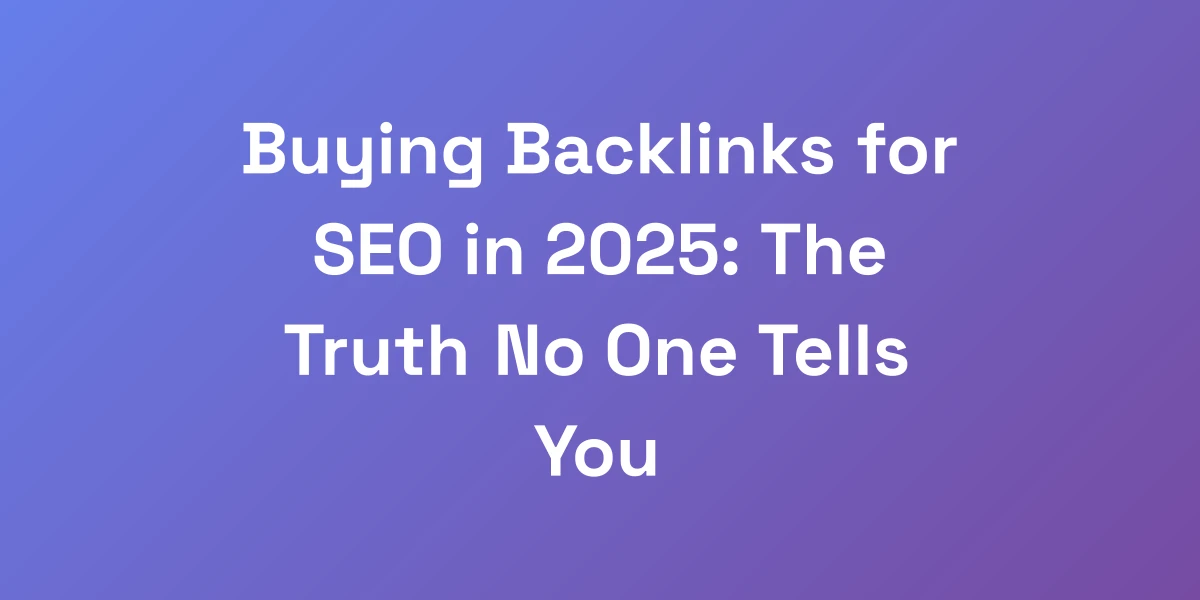
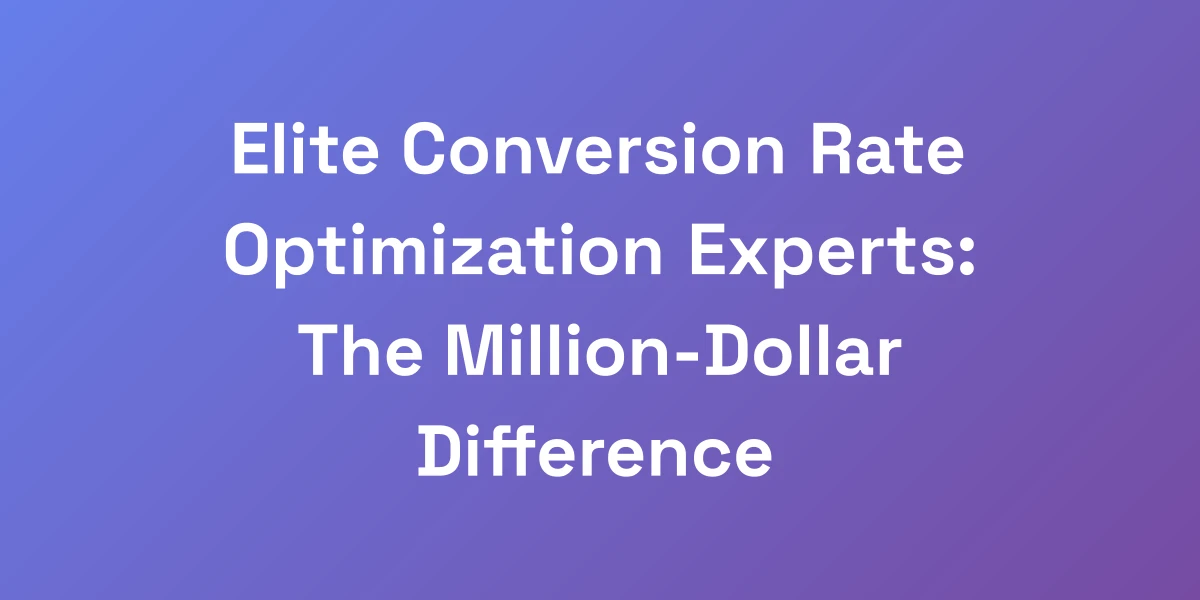
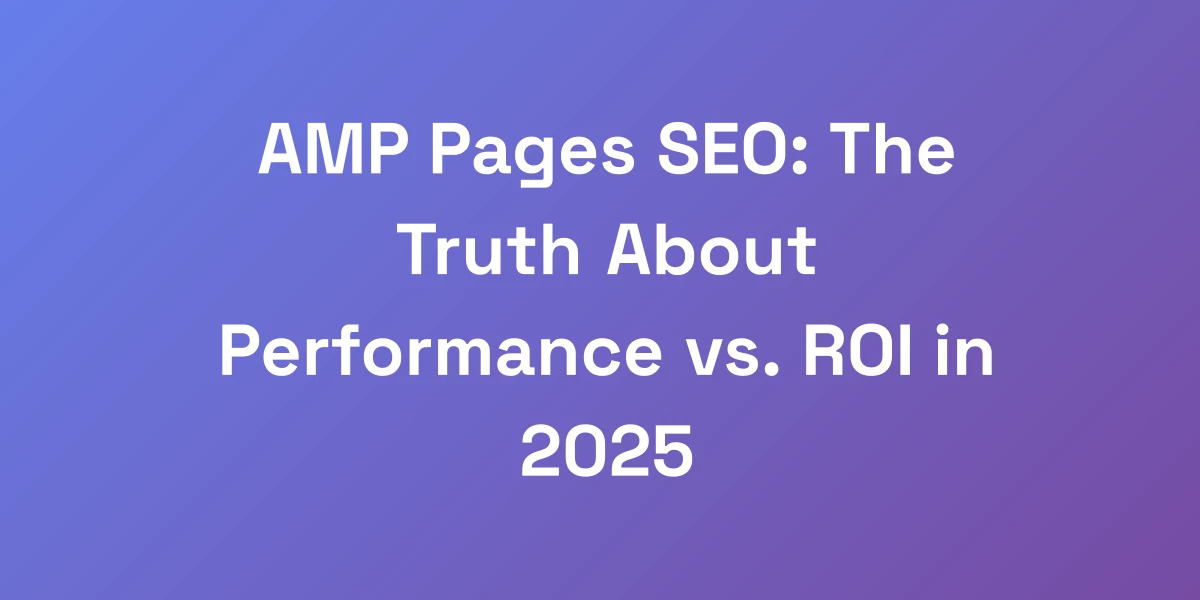

![Guaranteed SEO Services: The Truth Behind Rankings Promises [2025]](https://autoseo.eazyseo.co/wp-content/uploads/2025/03/Guaranteed-SEO-Services-The-Truth-Behind-Rankings.webp)
